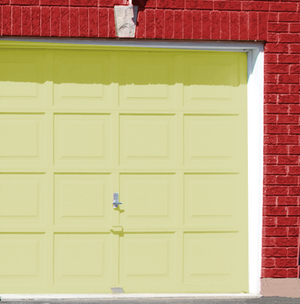If you have read my previous article on painting your basement to make it a more liveable, less humid space, you are probably also interested in insulating you basement to make it more comfortable and warmer during our cold winters.
Why should you insulate your basement? If you have no intention of using your basement for anything more than storage, you probably should not insulate your basement. However, if you would like to occasionally spend time in your basement, then insulation makes sense. Why? Hot air rises and as heat in generate in your basement, it rises to the underside of the upstairs living area and easily penetrates the plywood subfloor and travels upstairs and out of the basement.
You could output massive amounts of heat into your basement, but a large percentage would be lost through the subfloor without insulation. Insulation acts as a barrier to keep heat generated in the basement in place.
Many basements only have a few heat ducts and consequently are usually cold. Adding additional heaters do little to improve the situation because a basement is an un-insulated space. However, by insulating the basement you can achieve comfortable levels of warmth in the basement throughout the winter.
All areas of your basement can be insulated including the walls and the ceiling, but the ceiling will offer the most benefit. You may choose to insulate the walls at a later point but this article will focus on the ceiling with the intent that a drop ceiling or recessed ceiling will be installed at a later point.
The easiest and most cost effective insulation for this application is unfaced fiberglass batt insulation. The typical pink blankets that you have seen before. You will need to determine the thickness of insulation needed and how much insulation or how many rolls to purchase. The thickness of insulation is generally equal to the thickness of your floor joists. If you have ten inch wide joists, you should purchase ten inch thick batts of insulation. This will give you the most insulation value or r-value available. You can however purchase thinner insulation if saving money is a factor. To determine how many rolls you will need, take an overall measurement of your basement. For example, your basement measure 30 feet by 40 feet. That equals 1200 square feet. Purchase enough insulation to cover 1200 square feet and add ten percent to your total for waste. Purchase insulation in a width that matches the pacing of your floor joist. For example, 16 inches wide.
Now that you have your insulation, you are ready to begin installing. Installing could not be any easier. Since you have purchased unfaced batts in the correct width that corresponds with the spacing of you floor joists you will only have to unroll the batts cut them to length and push them in the joist spaces. Friction alone will keep them in place. When you encounter an obstacle, cut the batts to fit around the obstacle and continue on. You will want to wear gloves and a face mask for this procedure as fiberglass strands are an irritant for most people. Continue installing the batts in the above manner until you have complete the entire ceiling of your basement.
At this time you may wish to cover the fiberglass batts with plastic sheathing to contain the fiberglass strands. I highly recommend doing so. Purchase plastic sheathing at your home improvement store. Thicker sheathing will not rip easily so I recommend 5 mil sheathing or thicker. Cut the sheathing to size and install it by using staples and attaching it directly to the underside of the floor joist. Continue until you have completed the entire basement and you project is complete. In the future you may wish to install a drop ceiling to tidy up the appearance, but the insulation is complete and your basement will be considerable warmer.
Using you basement as living space opens up a number of possibilities. Maybe you want a media room, a home office, an extra bedroom, or a workout room, the options are endless. However, you project must begin with making your basement livable and comfortable and insulating it is but one step in the process.



